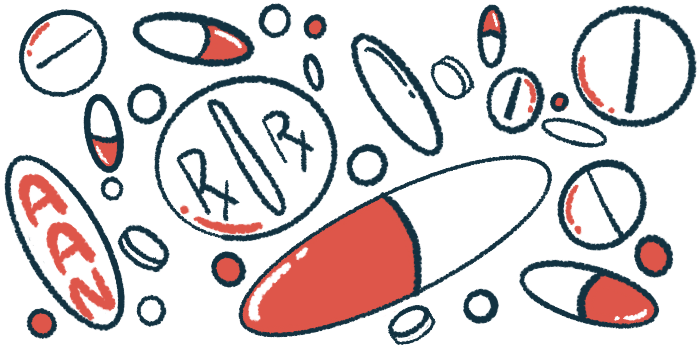AAN 2023: Blood pressure, asthma meds tied to lower Parkinson’s risk
Analysis included data on more than 5 million people, 783 different medicines

People prescribed certain medications to treat asthma or high blood pressure are less likely to develop Parkinson’s disease, according to an analysis of healthcare data in Norway.
The finding implies these therapies may have protective effects in Parkinson’s, which are currently being explored in preclinical models.
Trond Riise, PhD, of the University of Bergen, Norway, discussed the findings at this year’s annual meeting of the American Academy of Neurology (AAN) in a talk titled “Treatment of High Blood Pressure is associated with a Reduced Incidence of Parkinson’s disease.” The work was funded in part by the Norwegian Research Council and the Michael J. Fox Foundation.
In this study, scientists screened data from the public health system in Norway for associations between various medications and the risk of developing Parkinson’s. The analysis included data on more than 5 million people, including 15,849 diagnosed with Parkinson’s, as well as on about 600 million prescriptions for 783 different drugs.
“We looked at the association between [use of] each of these drugs and the later probability of being diagnosed with Parkinson’s disease,” Riise said.
Higher, lower risk of Parkinson’s
A total of 21 classes of medication, including therapies for anxiety, depression, and constipation, showed a significant connection with higher Parkinson’s risk. This doesn’t necessarily mean these medications are causing Parkinson’s, Riise said.
The association likely reflects efforts to manage early (prodromal) symptoms that appear before the disease has started to cause motor symptoms that could confirm a diagnosis. Since patients often have early issues with mental health and bladder/bowel health, it follows that they’d get prescribed medications for these issues.
“Some of the increased use of drugs is related to symptoms of the prodromal phase of the disease,” Riise said.
The researchers also identified 10 classes of medication associated with a significantly reduced risk of Parkinson’s. For example, beta 2 agonists, a class of medicine used for asthma and other lung conditions, were associated with a lower risk. This is in line with prior epidemiological research on beta 2 agonists.
Certain medicines for managing high blood pressure — angiotensin 2 blockers (ARBs) or angiotensin-converting enzyme (ACE) inhibitors — also showed an association with reduced risk. Similar findings regarding ARBs were recently reported in a retrospective study from Korea, Riise noted, calling the association between blood pressure medicines and reduced Parkinson’s risk “puzzling,” because “there is substantial evidence that individuals with risk for cardiovascular diseases have an increased risk” of Parkinson’s disease.
Since high blood pressure is a well established risk factor for cardiovascular disease, it might be expected that people with high blood pressure (those most likely to be prescribed these drugs) would be at a higher, not lower, risk of Parkinson’s. The finding implies, however, that these medicines may have protective effects.
Studies in animal models are ongoing to investigate the connection between these therapies and Parkinson’s disease.
There are thousands of medicines approved to treat a vast spectrum of conditions. Medications have complex biological effects that are rarely understood in their entirety. Theoretically, some medicines now being used for other diseases may have benefits in Parkinson’s that haven’t yet been recognized. Repurposing approved medicines is usually faster than developing new therapies, since their safety profile is already known.
“Drugs that are confirmed in these biological models, with a known side effect profile, represent promising candidates that could be directly tested for disease-modifying effects in Phase 2 clinical trials,” Riise said.
Note: The Parkinson’s News Today team is providing coverage of the American Academy of Neurology (AAN) 2023 Annual Meeting April 22-27. Go here to see the latest stories from the conference.







